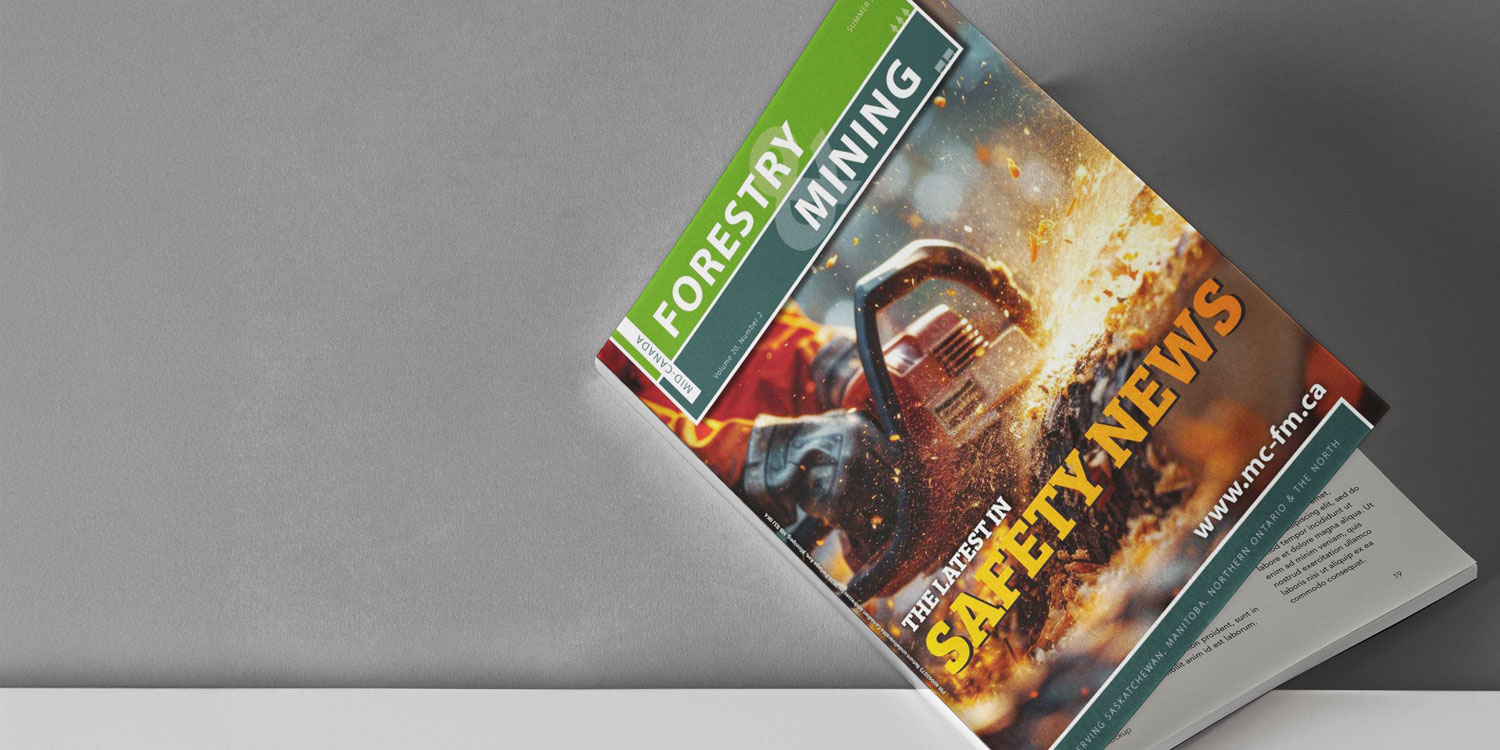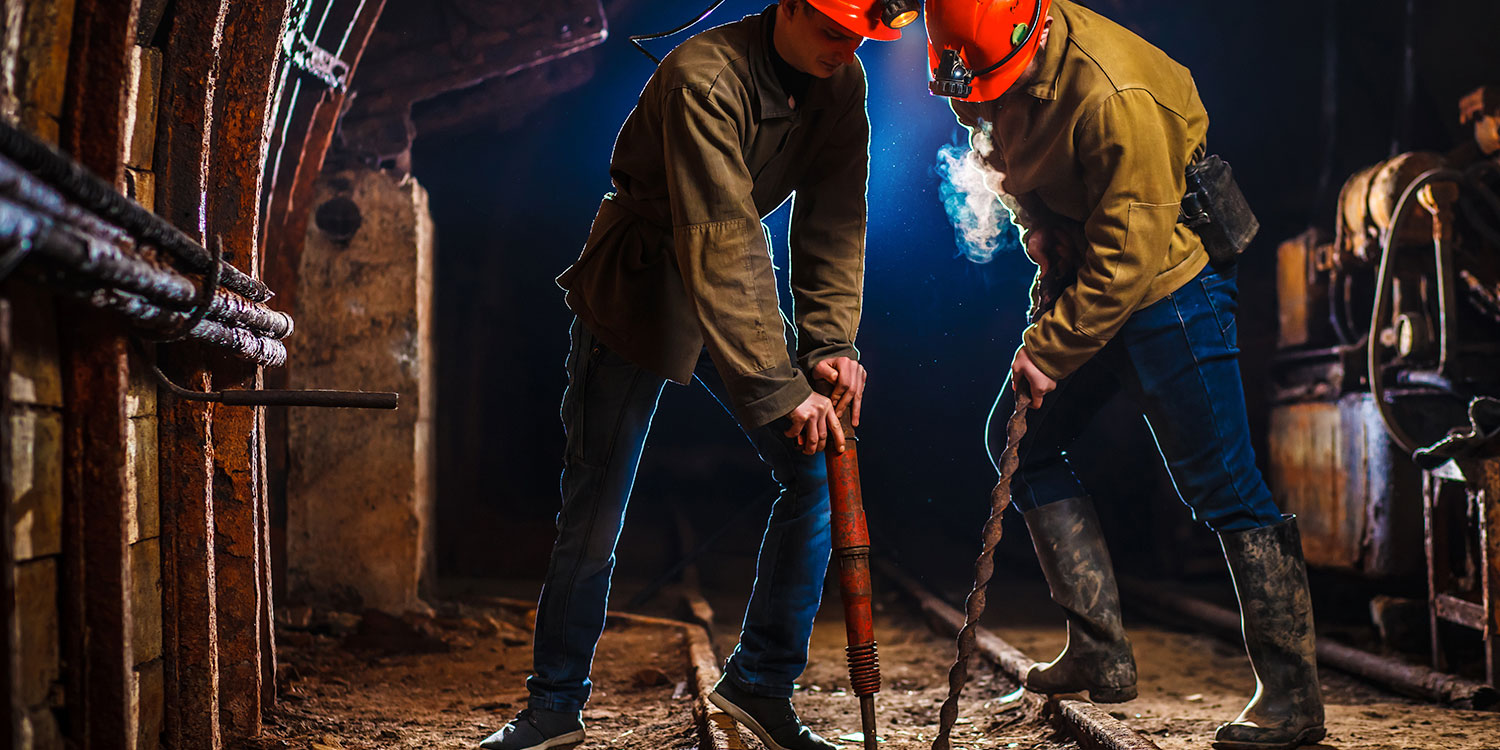By Katie Woychyshyn, Managing Editor
Every year on April 28, people across Canada observe the National Day of Mourning, a day that commemorates those who have died, suffered an
injury, or been affected by an illness due to their occupation.
No-one thinks their life could change forever when starting their workday. Yet, there are real hazards and risks in every workplace that can cause long-term effects to workers if not adequately prepared for and addressed.
According to the Association of Workers’ Compensation Boards of Canada (AWCBC), from 2021 to 2022, workers compensation boards across Canada reported 348,747 accepted lost time claims due to workplace injury and an overall fatality count of 993 workers. Of the accepted lost time claims, 8,533 were classified as Agriculture, Forestry, Fishing, and Hunting, and 2,702 were classified as Mining, Quarying, Oil, and Gas Extraction. Of the overall 993 fatalities reported, 147 were classified as Agriculture, Forestry, Fishing, and Hunting, and 37 were classified as Mining, Quarying, Oil, and Gas Extraction.
Though the AWCBC is still collecting 2022-2023 data, it is clear that both forestry and mining are industries that experience more risks and hazards than many
other industries. This article is meant to explore who is at risk, what quanitifies as workplace hazards, and touch on what hazards are most prevalent in forestry and mining.
Who is the Most At-Risk?
Though all workers are at-risk for injury or fatality, there is one demographic of workers that is the most at-risk on the job. According to the Institute for Work & Health, Toronto-based research not-for-profit, this group includes young workers who are new to the labour market; short-tenure workers who are new to their jobs (regardless of age); recent immigrants who are new to Canada; and employees at new firms or firms that had a 25% increase or decrease in staff in the last year.
“Many studies have found that adolescent and young adult workers are more likely to be injured on the job than older adults,” the Institute for Work & Health (IWH) reported. “However, there has been some debate as to whether this higher risk of injury is because of factors directly related to age (such as immaturity, reluctance to ask questions of supervisors) or whether it is because young workers are more likely to be employed in riskier jobs (such as jobs that require heavy lifting).”
The IWH article also cited a study conducted by Curtis Breslin and Peter Smith on behalf of the organization, where the key finding indicated that workers on the job for less than a month had four times as many claims as those who held their current job for more than a year. Another IWH study focusing on newcomers to Canada reported that in their first five years in Canada, male newcomers reported twice the rate of work-related injuries requiring medical attention compared to Canadian-born male workers.
The Government of Canada states that 40% of all workplace injuries happen during an employee’s first six months on the job, and stresses that every worker in Canada has the right to know about the hazards in their workplace and how to protect themselves, participate in workplace injury and illness prevention, and refuse dangerous work.
Along the same lines, the Federal Government adds that employers must inform workers of the hazards in the workplace, provide workers with safety gear and training, implement and enforce appropriate workplace health and safety policies, and do everything reasonable to protect workers from work-related injuries
and illnesses.
What is a Workplace Hazard?
The Government of Ontario defines an occupational/workplace hazard as “A thing or situation that can harm a worker.” Occupational hazards may include:
• Safety hazards that cause accidents and physically injure workers.
• Health hazards that can make a worker sick, varying from health effects like a headache or skin rash to a fatal occupational illness, such as cancer.
Effects of hazards can be acute or chronic. Acute effects occur after the worker is exposed to the hazard or hazardous substance, like a headache or difficulty breathing. Chronic effects are different, as the worker is not exposed all at once, but rather exposed at a low-level over a long period of time, building up to the effect. For example, exposure to silica resulting in silicosis.
A hazard is different than a risk. According to the Province, “A hazard involves the potential for a material or situation to cause harm. Risk is the probability, or chance, that the hazard will actually harm someone.” The example they state is that a welder has a higher risk of developing lung illness from welding fumes in a
poorly ventilated shop than in amwell-ventilated shop.
Hazards come in many forms. In an article published by SafetyCulture, a global safety-oriented technology company, the most common workplace hazards can be sorted into six categories:
1. Safety Hazards, such as spills, falls from heights, or electrical.
2. Physical Hazards, such as radiation, UV, extreme temperature, or loud noise.
3. Ergonomic Hazards, such as lifting, poor posture, repetitive motion, and vibration.
4. Work Organization Hazards, which cause psychosocial harm, such as workload demands, workplace violence, or sexual harassment.
5. Chemical Hazards, such as fumes, liquids, gases, and flammables.
6. Biological Hazards, such as blood, bacteria, insects, and animal waste.
SafetyCulture recommends that companies implement Hazard Identification as workplace practice to identify and record workplace hazards before an incident can occur, particularly, before each shift and after incidents occur.
It is important for employers to know about their workplace hazards, and how to go about keeping their employees safe.
The Government of Ontario recommends employers use the following methods of control when dealing with hazards:
• Substitution – Using a less hazardous material, changing the process equipment, or changing in the process itself.
• Engineering Controls – Designing or modifying plants, processes, and equipment to minimize workers’ exposure to the hazard. This may include isolating the hazard or using ventilation to control airborne hazards.
• Administrative Controls – Rotating job schedules, work-rest cycles, and timing of maintenance procedures to limit the amount of time individuals are exposed
to a hazard.
• Hygiene facilities and practices – Washing hands after handling material and before eating, drinking, or smoking; or avoiding touching lips, nose, and eyes with contaminated hands.
• Personal protective equipment (PPE) – Using PPE, which includes respirators, hearing protectors, and protective clothing. This, however, is considered the last line of defence in controlling employee exposure.
Using methods of control is important, but so is evaluating if the controls are working. The Government of Ontario advises conducting regular evaluations to confirm the controls are working, discussing the effectiveness with workers and listening to suggestions, and reviewing incident reports.
Prevalent Risks in Forestry and Mining
As mentioned in the introduction of this article, the forestry nor the mining industry is without risk to workers. However, safety knowledge and best practices continue to improve as more research is conducted across the world as well as here in Mid-Canada.
Of particular note is Workplace Safety North (WSN), a not-for-profit health and safety association funded by the Government of Ontario, which has been engaging industry professionals within both forestry and mining to conduct workplace risk assessments in the province.
WSN’s process focuses on leading indicators rather than injury of fatality statistics from the year before. The organization conducts a risk assessment workshop, where it asks workers, managers, and employers in different sectors of each industry which health and safety risks keep them up at night. Afterwards, the organization researches the root cause behind the key risks. This allows WSN to navigate addressing the risk; all while getting feedback from those in the industry. The organization consequently
alters its programming to address the most prevalent of the risks, providing webinars and other resources that can be accessed ontheir website.
The Most Prevalent Risks in Forestry
Working conditions and concerns differ from sector to sector within the forestry industry, so WSN conducted research that provided the top 10 health and safety risks for six different sectors.
Firstly, the Silviculture sector’s top health and safety risk was environmental hazards, such as dead snag trees or branches, chicots, hang-ups, and spring poles in cutover falling on workers. The sector’s other most prevalent risk was categorized as vehicle hazards, such as highway traffic incidents, unsafe driving on forestry roads, and motor-vehicle accidents.
Next, the Logging sector’s top health and safety risks were highway travel, particularly dangerous conditions, fatigue, weather, and road and vehicle maintenance.
The Sawmill sector identified its top health and safety risk as employees working under the influence of alcohol, prescription drugs, or other drugs. It’s second-most prevalent risk was workers taking shortcuts, which may be caused by gaps in training, coaching, and supervision.
For both the Pulp and Paper sector and the Corrugating sector, the most concerning health and safety risk was inadequate or improper lockout and tagout of machinery. Lockout and Tagout protects against unintentional exposure to hazardous energy from equipment and machinery.
Finally, the Paper Products sector indicated that lack of training and monitoring of workers operating mobile equipment was a unanimous concern among workers, supervisors, and employers, according to a May press release.
The Most Prevalent Risks in Mining
Similarly, working conditions and concerns differ from sector to sector within the mining industry, so WSN conducted research that provided the top 10 health and safety risks for seven different sectors.
In both the Underground Mining sector and the Mobile Equipment sector, experts reported that the top health and safety risk was collisions or contact between large and small mobile equipment and pedestrians and the struggle around
traffic control.
The Battery Electric Vehicles sector’s top health and safety risk was incidents involving fire. When WSN conducted a root cause analysis to discover the top 10 causes of battery electric vehicle fires, results included inadequate maintenance processes, the current lack of standards for battery electric vehicles (as of summer 2022), ineffective management of change on new equipment, energy sources creating potential for electric shock, and ineffective company operator and maintenance procedures.
The Surface Diamond Drilling sector identified its top health and safety risk as a lack of access to timely emergency response. WSN’s root cause analysis also indicated inadequate emergency response planning with Emergency Services and workers; the limited availability and low readiness of transportation and evacuation equipment to transport injured worker to transfer point; the lack of, or inadequate, emergency response procedures; the hesitation to call for emergency response due to employees either being unsure of when to call or afraid of reprisal for calling; and the lack of awareness or preparation to address an emergency from pre-existing medical condition.
For the Surface Mining sector, the top health and safety risk was silicosis, an incurable occupational lung disease that can lead to disability and death. The disease itself is caused by the inhalation of silica particles, but WSN found contributing factors within surface mining to include no committee to actively control and monitor the issue; systems don’t handle the dust levels; lack of funding to combat issues within training, systems, and companies; a lack of commitment to fix equipment and production of silica; and no party holding responsibility for silica exposure.
The Ground Control sector results indicated that rockburst as its top health and safety risk, which a sudden and violent movement of rock in high-stress environments, particularly within mines. The most recent root-cause analysis listed that the top five root causes of the rockburst included a lack of burst-prone ground support; a lack of understanding of geology and stress conditions; a lack of management commitment to safety; an ineffective risk management process, and companies using an improper mine plan.
Finally, the Water Management sector identified its top health and safety risk as workers being exposed to a run of material, which the root-cause analysis determined was caused by lack of understanding/awareness of implications of water accumulation, poor management of water from back filling, as well as in ore and waste passes, among other reasons.
Conclusion
With every year that passes, workplace injury and hazards will continue – but so will safety organizations and advocacy for best practices. Here, at Mid-Canada Forestry and Mining, we recommend that you explore the resources listed on this page, know how to respond in an emergency, and most importantly, stay safe.
References
Association of Workers’ Compensation Boards of Canada (AWCBC). (2022). National Work Injury, Disease and Fatality Statistics: 2020-2022. https://awcbc.org/wp-content/uploads/2024/01/national-work-injury-disease-and-fatality-statistics-2020-2022.pdf
Association of Workers’ Compensation Boards of Canada (AWCBC). (2024, March 27). Statistics: National Work Injury/Disease Statistics Program (NWISP). AWCBC/ACATC. https://awcbc.org/en/statistics/#fatalities
Canadian Centre for Occupational Health and Safety. (2024, February 10). Hazards. www.ccohs.ca/topics/hazards#ctgt_1-5
Canadian Centre for Occupational Health and Safety. (2024, May 10). Silicosis. www.ccohs.ca/oshanswers/diseases/silicosis.html
Forest Products. Workplace Safety North. (n.d.). www.workplacesafetynorth.ca/en/about/industries/forest-products
Government of Canada. (2022, September 9). Attention Younger Workers. Canada.ca. www.canada.ca/en/employment-social-development/services/health-safety/reports/younger-workers.html
Government of Ontario: Ministry of Labour, Immigration, Training and Skills Development. (n.d.). Workplace hazards. Ontario.ca. www.ontario.ca/page/workplace-hazards
Institute for Work & Health. (2009, May). (Issue brief). “Newness” and the Risk of Occupational Injury. Toronto, ON. www.iwh.on.ca/plain-language-summaries/newness-and-risk-of-occupational-injury
Merriam-Webster. (2011). Rock burst. In Merriam-Webster.com dictionary. www.merriam-webster.com/dictionary/rock%20burst
Mining. Workplace Safety North. (n.d.). www.workplacesafetynorth.ca/en/ about/industries/mining
Tarlengco, J. (2024, May 7). What are Workplace Hazards? SafetyCulture. https://safetyculture.com/topics/ workplace-hazards


 1-866-985-9780
1-866-985-9780








